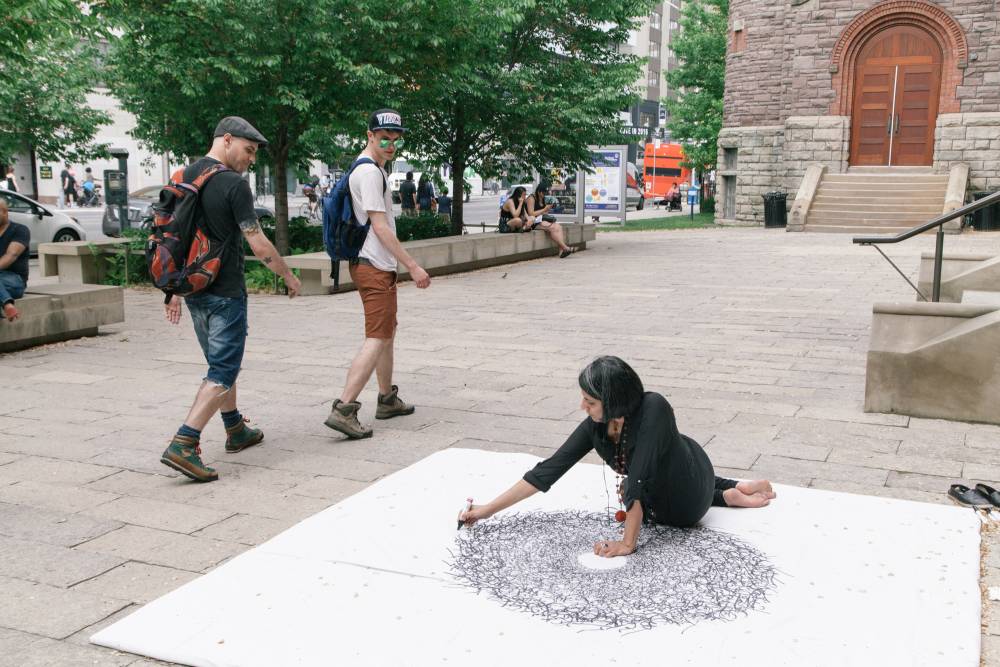A journal for storytelling, arguments, and discovery through tangential conversations.
Thursday, May 16, 2024
|
Lauren Fournier
Tazeen Qayyum is a Pakistani-Canadian artist based in Toronto. She was trained in the South Asian and Persian traditions of miniaturist painting before she began the mixed-media practice which she sustains today. During the month of Ramadan, I wanted to speak with her about what it is like to be a practicing Muslim as well as a contemporary artist working in Canada. I was also interested in her experience making work that is conceptually driven and shaped by culture and faith. For example, in her iconic archival ink on paper works, Qayyum repeats a word written in Urdu script to form concentric circles, which the artist inscribes through a repetitive movement that is prayer-like. The artist chooses words stemming from concepts found in her Muslim faith. Words like khayaal (care), sakoon (calm/peace), sabr (patience), zameer (conscience), yaqeen (certainty/belief), and fikr (concern/thought) have featured in her work, as well as more explicitly political words like brabri/bartri (equality/privilege), which the artist made in direct response to the 2020 resurgence of Black Lives Matter.

Friday, April 9, 2021
|
Lauren Fournier
I first met Hazel Meyer in Toronto back in 2016, on what was my “first official studio visit” as a newbie curator. I was humbled by Hazel’s generosity as she walked me through her work in what is now the Ubisoft building in west Toronto, inviting me into her world. Hazel’s artwork was well-known to me, then, as an iconic queer artist whose work was advancing conversations about queer bodies and queer histories. I was a big fan of her No Theory, No Cry, which I first encountered at Art Metropole, and which encompassed the feelings of painful pleasure and strife of my own experiences reading theory in art school. Nestled in a womb of cheerleading pompoms, pool noodles, archival photographs of now-deceased Toronto lesbian activist Chris Bearchell next to photographs from kink and leather communities, Hazel and I had an easy rapport. We were enrapt in conversation about what it might mean to have a women’s anal erotics as part of the “queer theory” conversation (where's the feminist butt stuff?), as the artist’s jean jacket depicting little buttholes hung above our heads. When we stumbled upon the shared fact of our working-class/poor backgrounds, our bond solidified—we had found a rare kinship, and we weren’t going to let it go. Indeed, finding out this fact about the other led me to find some power humming below the surface of things—below the surface of the city—a humming loud like industry, and a bit hidden, like shame. It was true: being “out” as someone from a low-income family seemed all too rare in a contemporary art world, where the assumption of middle-class-ness and even, at times, upper-middle-class-ness was the norm. This, too, in the institutions that surround contemporary art ones (like the university).
